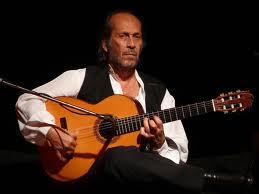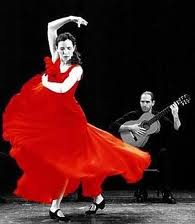Spanish Dance and Music: Overview

One of the most iconic images of Spain is that of a Flamenco dancer in her traditional, frilly dress. Although Flamenco is without doubt the most famous of Spanish dance styles, it is most certainly not the only one. Other styles of Spanish dance include the Fandango, the Bolero, the Sevillanas, the Sardana and the Jota. Many of these dances originated as folk dances and were later choreographed, in order to standardise and preserve them.
Spanish Dance
Spanish dance has always been famous over the centuries as Spain is an example of a country where the art of dance has been developed extensively. So much so, that dance could be said to be the national art of Spain. In fact, Flamenco has been considered to be of such value to Spanish culture that UNESCO has named it an Item of Intangible Cultural Heritage of Humanity.
Even the Romans, who conquered Spain in the 3rd Century, found the dancers of Cádiz to be most pleasing. Spanish dance is also a resilient art form as it is intangible. This means it was protected from destruction by many forces such as the Visigoths, who destroyed buildings and books during their stay in the Spanish peninsular. During these turbulent centuries, dance was used to commemorate battles and wars as well as more personal subjects such as love and loss. The Moors, unsurprisingly after their seven hundred year long stay in Spain, also helped to strengthen and enrich Spanish dances.
In the 15th Century, many Spanish regions began to form their own styles of dance which led to a huge collection of distinct forms of dance. Together with hybrid dances, where two distinct styles had mixed together, there were over two hundred separate dance styles in the region of Catalonia alone during the 15th Century.

With the expansion of the Spanish empire, many of the Spanish colonies began developing their own styles of dance based on those performed by the Spanish men and women. The Philippines is an excellent example of this as they still dance some of the old Spanish folk dances, albeit with a little bit of a twist. For example, while the Spanish Fandango would often be danced with castanets, the philippino version of the dance is danced with candles carried in small glasses.
The 18th Century, or the period of Enlightenment under the Bourbon Kings, was a time where Spain made substantial progress. It was also the century where Spanish dance was at its peak and where the Spanish dances that we can recognise today grew in popularity.
Later in Spanish history, the gitano (gypsy) influence became the strongest factor in the creation and evolution of dance in Spain. The gypsies arrived in Spain during the Baroque period and it is thanks to them that we now have Flamenco.

However as Flamenco became more and more popular on the international and national stage, regional dances from the early centuries suffered. No more so than under the dictatorship of General Francisco Franco, who banned anything that could be consider regional or threatening to his idea of a traditional Castilian Spain.
Yet, Spanish dance still thrives today, in all of its forms, and is still continuing to evolve. This is the case with Flamenco where a new style, 'Nuevo Flamenco' or New Flamenco, is becoming more widespread. Many people also learn some of the less widespread dances as an introduction to the complex steps used in Flamenco. The Sevillanas for example are much simpler and so are great for beginners. Furthermore, practising these Spanish dances is a great way to meet new friends and learn the Spanish language.
